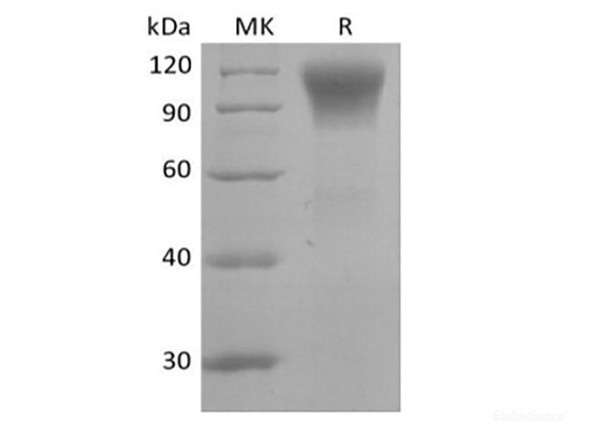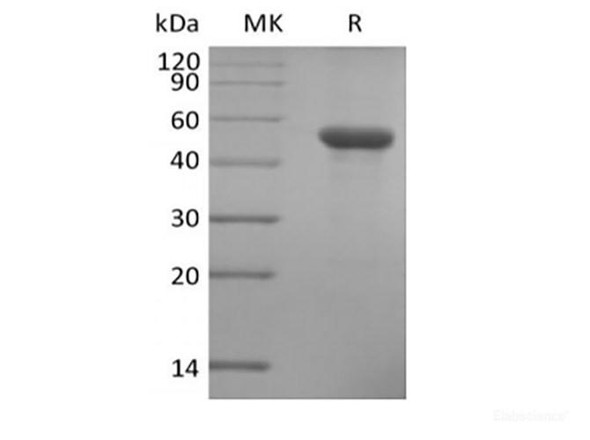Description
| Product Name: | Recombinant Human GAS6 (C-6His) |
| Product Code: | RPES6278 |
| Size: | 10µg |
| Species: | Human |
| Expression Host: | HEK293 Cells |
| Synonyms: | AXLLG, AXLLGAXL stimulatory factor, AXSFAXL receptor tyrosine kinase ligand, Gas6, GAS-6, growth arrest-specific 6, growth arrest-specific protein 6 |
| Mol Mass: | 72.7 kDa |
| AP Mol Mass: | 80-90 kDa |
| Tag: | C-6His |
| Purity: | > 95 % as determined by reducing SDS-PAGE. |
| Endotoxin Level: | < 1.0 EU per μg of the protein as determined by the LAL method. |
| Bio Activity: | Immobilized Human AXL-His at 10μg/ml (100 μl/well) can bind Human GAS6-His : Biotinylated by NHS-biotin prior to testing. The ED50 of Recombinant Human GAS6-His is 0.04466 ug/ml. |
| Sequence: | Ala31-Ala678 |
| Accession: | Q14393 |
| Storage: | Store at < -20°C, stable for 6 months. Please minimize freeze-thaw cycles. |
| Shipping: | This product is provided as liquid. It is shipped at frozen temperature with blue ice/gel packs. Upon receipt, store it immediately at < - 20°C. |
| Formulation: | Supplied as a 0.2 μm filtered solution of PBS, 10% Glycerol, pH 7.4. Normally 5 % - 8 % trehalose, mannitol and 0.01% Tween80 are added as protectants before lyophilization. Please refer to the specific buffer information in the printed manual. |
| Reconstitution: | Not Applicable |
| Background: | GAS6 (Growth arrest-specific protein 6) is also known as AXL receptor tyrosine kinase ligand, AXLLG, is a multimodular protein that is up-regulated by a wide variety of cell types in response to growth arrest. Gas6 binds and induces signaling through the receptor tyrosine kinases Axl, Dtk, and Mer whose signaling is implicated in cell growth and survival, cell adhesion and cell migration. GAS6/AXL signaling plays a role in various processes such as endothelial cell survival during acidification by preventing apoptosis, optimal cytokine signaling during human natural killer cell development, hepatic regeneration, gonadotropin-releasing hormone neuron survival and migration, platelet activation, or regulation of thrombotic responses. |






